Your Guide to Very Light Private Jets
Your Guide to Very Light Private Jets
The tiniest private jets available are called Very Light Jets (VLJ).
These planes are typically utilised for 1- to 2-hour legs. However, some VLJs can fly continuously for about three hours under ideal circumstances.
Some conveniences are skipped on the smaller end of the VLJ market, like the Cirrus Vision Jet, Eclipse 500, Eclipse 550, and Cessna Citation Mustang. For instance, none of the aforementioned aircraft had restrooms, with the exception of the emergency toilet on the Mustang.
Typically, a club layout on a VLJ may accommodate up to 4 passengers comfortably. Manufacturers typically assert that adding a belted lavatory and a first officer’s seat to the cockpit will increase passenger capacity.
All of the VLJs on the list have single-pilot certification. As a result, only one pilot is needed, which is a terrific method to save ownership expenses. VLJs are also appropriate for owners who want to fly their aircraft alone.

History
Very Light Jets have a brief history, and the classification of what constitutes a VLJ has always been fairly ambiguous.
For instance, some claim that the 1950s Morane-Saulnier MS.760 Paris was the first Very Light Jet. This is due to the fact that it has four seats and only requires one pilot to operate. However, this aircraft was far smaller than the ones that are now regarded as VLJs.
For instance, unlike all previous business jets, the MS.750 Paris had a sliding canopy to enter the cabin.
Whether or not this qualifies as a VLJ, Cessna made attempts in the 1950s and 1960s at what is now known as a VLJ. But either these planes were never built or they were expanded into bigger planes, like the Citation Jet.
There were other Very Light Jet attempts in the 1970s and 1980s.
But once more, these were never realised. Once more, this occurred before the Very Light Jet class had been formally established.
The interest in the air taxi sector didn’t start to spur advances in the VLJ category until the early 2000s.
The Cessna Citation Mustang, Embraer Phenom 100, and Eclipse 500 were consequently produced as a result of this.
Air taxis were the topic of intense curiosity and anticipation at the time, and it was thought that they would soon replace ground transportation for short distances in both the United States and Europe.
Nevertheless, despite the Cessna Citation Mustang’s enormous popularity, the air taxi market did not perform as anticipated.
Naturally, the financial crisis of 2007–2008, which greatly diminished the allure of using private aircraft for brief journeys of 30 minutes, was one of the major contributing factors. It was also unprofessional for CEOs to fly in public in a private plane.
With the exception of the Cirrus Vision Jet, VLJs have grown in size and are now starting to drool at the door of light jets. The Vision Jet is a single-engine VLJ that transforms the popular Cirrus propeller aircraft’s design philosophy into a very powerful and effective jet.

Mission Standards
Normally, up to 4 passengers can be transported for up to 2 hours using very light jets.
Additionally, the majority of VLJs can take off and land on runways as short as 3,000 feet. This therefore expands the range of possible destinations for these aircraft.
VLJs are therefore fantastic for flying to distant locations with little airport infrastructure. However, because of their powerful jet engines, they will transport you there more quickly than a propeller plane.
Initially, VLJs weren’t intended to offer the same levels of comfort as Light Jets. The absence of complete restrooms on aeroplanes like the Citation Mustang and Eclipse 500 serves as the clearest example of this.
The theory was that because their typical missions are so brief, few passengers would need to use the lavatory while they were in flight.
That sums up the normal mission requirements for this aircraft well.

Very Light Jets in Production
There are currently 4 Very Light Jets in production. However, the size does vary quite a bit between these aircraft.
Embraer Phenom 100EV

The most recent version of the wildly popular Embraer Phenom 100 is the Phenom 100EV. A very light jet (VLJ) called the Phenom 100/100EV was created by Brazilian aircraft maker Embraer.
The Phenom 100 started its development in April 2005, and in November of that same year, it debuted a full-scale mock-up. The Phenom 100 made its debut in July 2007, was certified in December 2008, and received its maiden delivery later that same month. The Embraer Phenom 100E, which included modest improvements and multifunction spoilers, quickly replaced the Phenom 100. In March 2017, the Phenom 100EV went into service with significant weight reductions, more thrust, and a redesigned flight deck.
The Phenom 100EV variants are widely used by private owners, businesses offering fractional ownership plans, charter operators, aircraft management organisations, and military operators for short distance flights. The Phenom 100 type offers a significant speed advantage over an equivalent-sized turboprop aircraft, with around 400 units now in service.
Cessna Citation M2
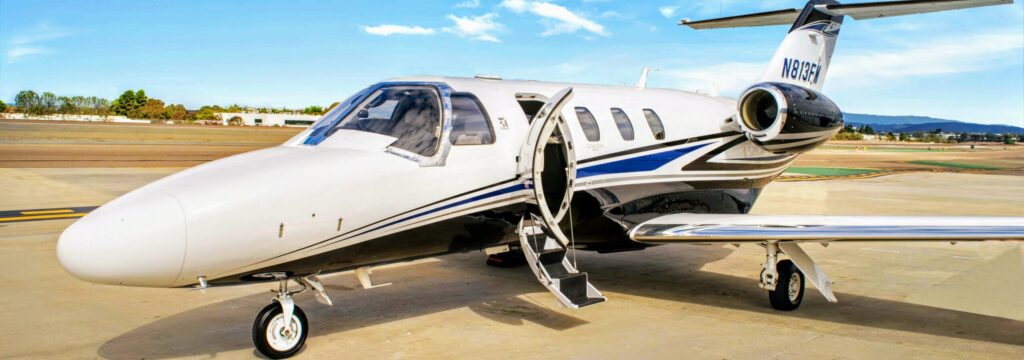
The smallest jet in Cessna’s current array of aircraft is the Citation M2. The Cessna CitationJet line of aircraft includes the M2. The first flight of the 1989-born Model 525 occurred in 1991. FAA certification was obtained a year later. Two years later, deliveries began. The CJ1 and M2 variations were added to the original CitationJet model. To reach the M2, the CJ1 took a different route. From the CJ1, the CJ2 and CJ2+ were created.
Launched in September 2011 was the M2. The M2 was based on the CJ1 form of the CitationJet family, which was out of production at the time. The M2 was upgraded by Cessna to include a new cabin design and more effective engines. In 2012, the first prototype took to the air, and manufacturing followed a year later. More than 250 M2 aircraft have been put into service since 2013.
Cessna promotes the M2 as the consumer’s entry-level jet. Customers want greater speed, greater range, and greater comfort. A genuine jet performer, the M2. The M2 is ideal for customers who want to save money or fly the aircraft themselves because of its size, which enables a single pilot to operate it. As a result, the M2 is a fantastic choice for an owner/operator aircraft. But keep in mind that in the VLJ category, single-pilot operating is the norm. Many larger aircraft, including the Pilatus PC-24 and Embraer Phenom 300E, can even be flown by a single pilot.
HondaJet HA-420
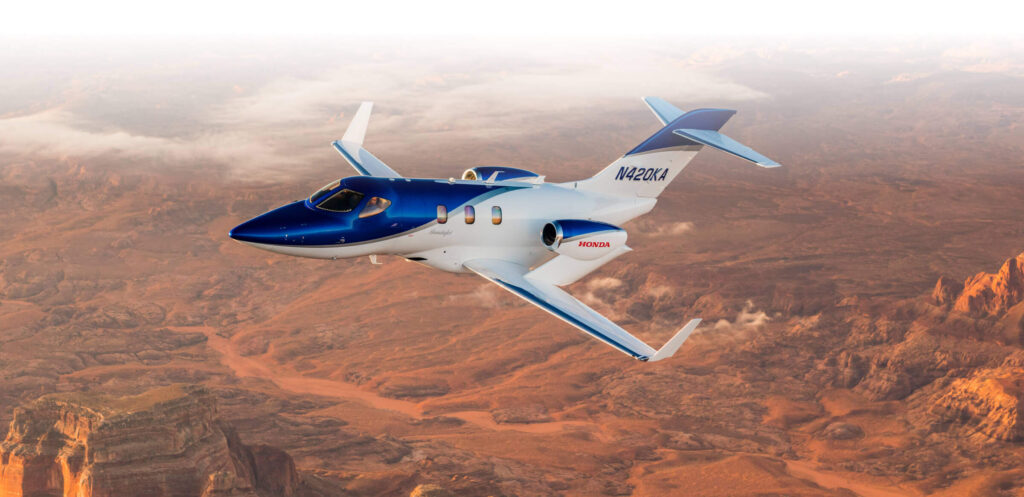
The result of years of work by the Japanese corporation renowned for taking their time to perfect their products is the HA-420 HondaJet. The HondaJet underwent more than 30 years of development before making its first flight in December 2003 and going into full production in December 2015. Over 150 HondaJets, classified as a Very Light Jet (VLJ), have been produced at the Greensboro, North Carolina, manufacturing facility since the first aircraft rolled out of the factory.
Cirrus Vision Jet
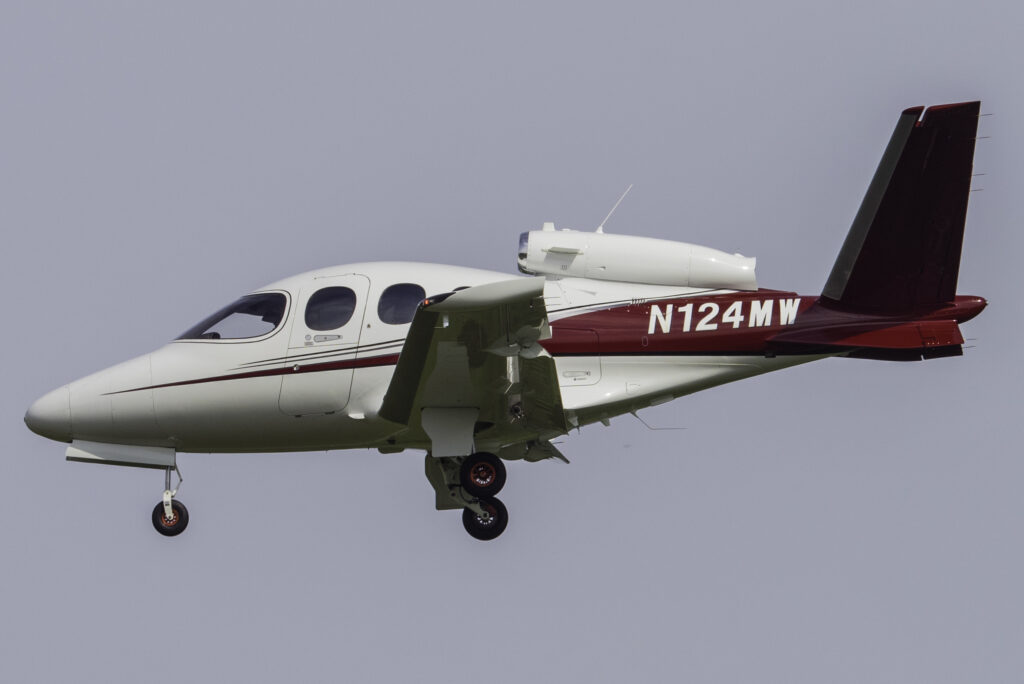
One engine alone powers the Cirrus Vision Jet SF50 Very Light Jet (VLJ). Production of the aircraft, which was designed and built by the Duluth, Minnesota-based Cirrus Aircraft, began in the second half of 2016. To far, Cirrus has manufactured over 170 aircraft. This is the sole jet-powered aircraft that the company manufactures; Cirrus is normally renowned for its small, turboprop aircraft, like the SR20 and SR22.
The Vision Jet is unique due to its small size and status as the first single-engine approved civilian jet. When the Vision Jet was first introduced, it was well welcomed, and by the time manufacture of the aircraft began, Cirrus had received over 600 orders
Out of Production Very Light Jets
There aren’t many aircraft in the Very Light Jet class. Only a small number of VLJs are no longer in production.
Keep in mind that the Embraer Phenom 100 and Phenom 100E light planes are also no longer being produced. They resemble the Phenom 100EV, which is now in production, quite closely. As a result, they are mentioned here rather than in more depth below.
Cessna Citation Mustang

The Cessna Citation Mustang is a jet aircraft that has been designed to offer plenty of storage space, cutting-edge engine controls, and a svelte aerodynamic shape. It is single-pilot certified. The Citation Mustang, the smallest member of the Cessna Citation family, boasts one of the class’s quickest cruising speeds, one of the largest cargo capacities, and full Federal Aviation Administration (FAA) type certification for operations in known icing circumstances.
The $2.4 million Mustang was shown at the NBAA convention in 2002 and had its first flight on April 23, 2005. On September 8, 2006, the Federal Aviation Administration granted the aircraft full type certification. On November 9, 2006, the FAA granted Cessna authorization to operate in “known icing conditions.” On November 22, 2006, the same day the FAA granted Cessna the required certification, Cessna delivered the first production LJ. On April 23, 2007, Dave and Dawn Goode of GOODE Ski Technologies acquired the first Cessna Mustang that had been sold to the general public.
Eclipse 500
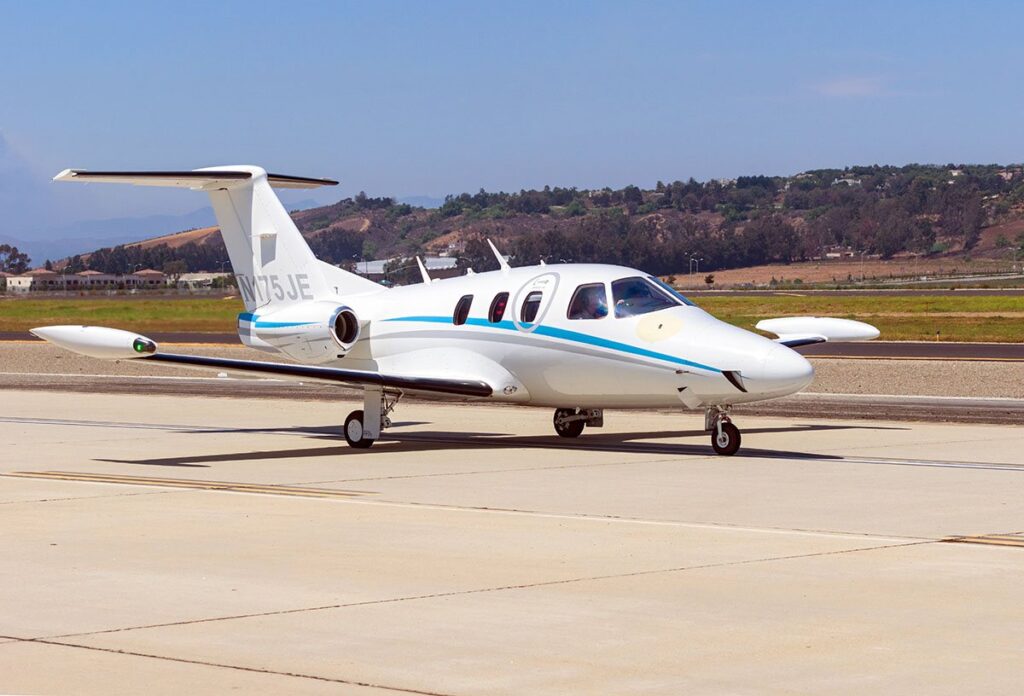
The Eclipse Aerospace EA500 is the Eclipse 500’s official name. Eclipse 500 deliveries started in 2006 and ended in 2008. After these two years, deliveries were discontinued owing to a funding shortfall. In November 2008, the business declared bankruptcy.
However, Eclipse Aerospace acquired the assets of Eclipse Aviation in August 2009. After that, Eclipse Aerospace revealed the Eclipse 550, an upgraded version of the Eclipse 500.
Eclipse Aviation managed to create 260 aircraft despite just having two years of client deliveries. A staggeringly high quantity given the limited delivery timeframe. With its distinctive wing form and ability to fly with just one pilot, the Eclipse 500 is a standout aircraft.
Being a Very Light Jet, the Eclipse 500 is ideal for passengers who want to travel on a brief flight with just one or two other persons and little luggage.
The Cirrus Vision Jet is the currently on the market aircraft that is most comparable to it. An aircraft that, like the Eclipse 500, is ideal for owner/operators and small groups.
Eclipse 550
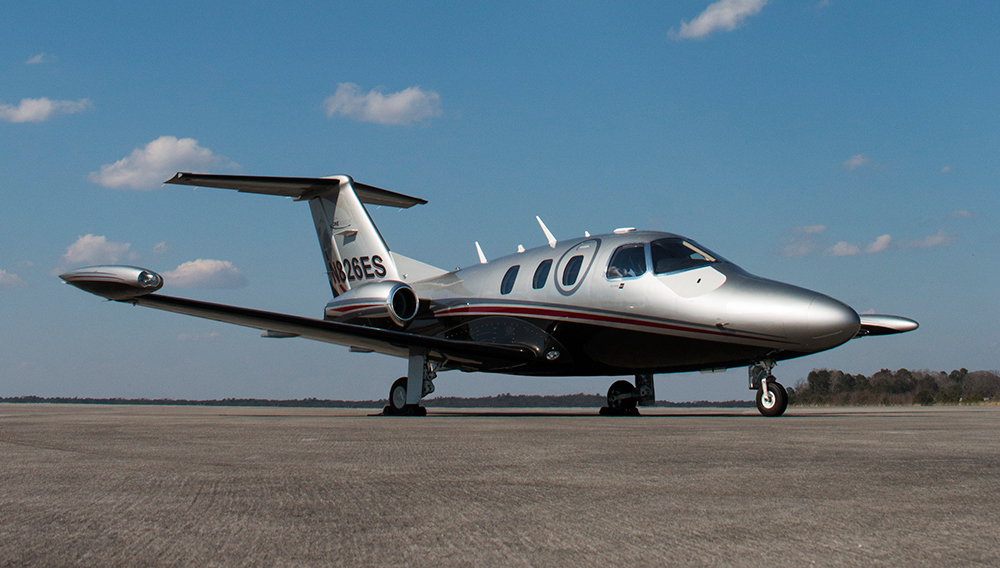
The Eclipse 550 is an extremely light jet that was initially created by Albuquerque, New Mexico, based One Aviation and then Eclipse Aerospace. The plane is a prototype for the Eclipse 500, which was created by former Eclipse Aviation. The 550 is a low-wing, six-seat, twin-engine jet-powered aircraft, just as the 500. The Eclipse 550 is approved for use with a single pilot.
At the National Business Aviation Association (NBAA) conference in Las Vegas, Nevada, in October 2011, Eclipse Aerospace debuted the Eclipse 550. The manufacture of the aircraft began at EA’s Albuquerque facility in New Mexico in June 2012, and the Federal Aviation Administration (FAA) granted the production certificate in March 2013. In March 2014, the first delivery was made.
Price to Buy
As mentioned, VLJs are the most affordable category of private jet to purchase and own.
On average, most VLJs can be purchased for under $5 million.
The Cirrus Vision Jet, for example, can be purchased for just $3 million new, with an average pre-owned price of $2 million.
Given that VLJs are highly desirable there are plenty available on the market. Additionally, the depreciation is not as aggressive as some light jets.
Use the Aircraft Value tool to get the latest market values
Operational Cost
VLJs have the lowest ownership costs of any type of aircraft.
This is due to their reduced weight and less powerful engine requirements compared to larger aircraft. Since fuel prices are one of the key causes increasing hourly variable costs, less fuel burn for VLJs means lower fuel expenses.
Additionally, VLJs require less maintenance, have lower landing costs, and need less storage. Additionally, compared to larger aeroplanes, the value of the aircraft is much lower, which means insurance expenses are cheaper.
As a result, operating most VLJs will cost about $1,000 per hour, with typical yearly fixed expenses of about $250,000. Of course, these numbers will vary from aircraft to aircraft, so utilise the Ownership Calculator to determine the annual operating costs of any specific aircraft.
When to Apply
When travelling over short distances with a small number of passengers between distant sites with limited runways, Very Light Jets are ideal.
Due to the addition of features like fully enclosed restrooms in recent years, the distinction between VLJs and Light Jets has become more hazy.
A VLJ is thus a sensible choice if you can carry the people on board and the range is adequate for your trip.
How Well-known Are Ultra-Light Jets?
Just over 2,000 Very Light Jets are now in use worldwide.
While this is significantly less than other types of private aircraft, it’s crucial to keep in mind that these models are more newer and haven’t been around as long.
Comparing with the quantity of Light Jets is unfair because they have existed for much longer than actual VLJs, which have only existed for the previous 15 to 20 years.
Summary
In conclusion, Very Light Jets are excellent for making quick trips within the United States and Europe (such as from Paris to Geneva).
They offer a practical means of travel between places with short runways.
